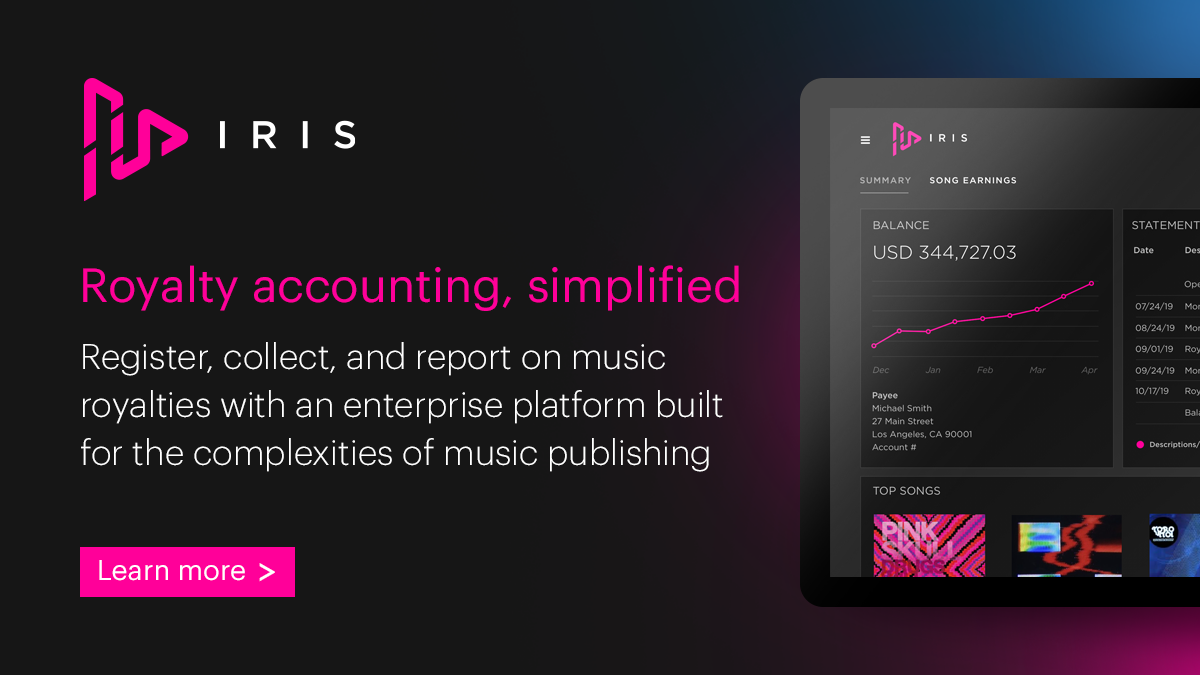In April 2021, Synchtank published its state of the nation report on royalty accounting in the digital age. It was called Drowning In Data for a very clear reason: the streaming age has given rights owners access to data like never before, but the sheer volume of data out there was now at a scale that would have been incomprehensible two decades earlier – and it was growing at breakneck speed.
Data is both a blessing and a curse: almost everything is countable; but there are now so many more things to count.
Over a year and a half on from the report, which laid out the challenges ahead as well as some of the solutions coming down the pike, we are taking the temperature of the data business again – looking at the improvements made and spotlighting the problems still to be resolved.
The growth/complexity tension
The drowning in data dynamic continues for everyone as they have all been playing catch up with the past while simultaneously trying to get ahead of the future in terms of the ballooning volume of data they are exponentially expected to deal with.
“The biggest challenges continue to be the massive amounts of data pouring in via income reports,” notes Janet Landrum, Royalties Specialist at Synchtank. “Not only the fields of metadata that need to be captured, but the fractioned micro pennies that result in sometimes millions of line items.”
Matt Phipps-Taylor, the Chief Information Officer at peermusic, says the story of royalty administration in 2022 can be broken down into two chapters – “growth” and “complexity”.
“All publishers will have seen growth in the number of revenue streams and volume of associated royalty data, particularly for digital, and that brings administrative complexity due to the fragmented and multi-territorial nature of digital licensing,” he says. “At peermusic, we’ve also seen a trend towards increased complexity in the nature of publishing deals and catalogs. Growth x complexity = a challenge for everyone in publishing administration!”
“Growth x complexity = a challenge for everyone in publishing administration!”
– Matt Phipps-Taylor, peermusic
Data out versus money in
Phipps-Taylor says the explosion in the number of digital platforms is creating mounting problems on both sides of publishing administration: on the “data out” side; and on the “money in” side.
In terms of the former (“data out”), he says, “Each new digital platform – when appropriately licensed – requires some form of data registration/claiming process to ensure that our catalog is correctly represented and remunerated.”
There is no single solution here as processes will be affected by so many variables, such as the size of the platform, the nature of consumption on that platform, the types of licenses applied and the market(s) it is operational in.
“Operating globally across big and complex publishing catalogs, the tracking of which rights in which catalogs need to be registered or claimed with which entities in which territories is a complex activity, even before the technical challenges of making necessary data exchanges in the various different formats,” he notes.
In terms of the latter (“money in”), he suggests that, given the scale of data processing required here, “the average value of an individual data line is getting smaller and smaller”. The statements coming from the assorted DSPs may differ in format and have markedly different quality in terms of the scope and robustness of reporting.
Automation is required and data processing has to become cheaper
Moore’s Law (originally applied to microchips) holds that steadily over time computational progress becomes faster, smaller and more efficient. Those dealing with billions of lines of streaming data today would argue it has not quite come to pass in the digital music world.
Phipps-Taylor calls for greater automation in the administration cycle to expedite things. “There is too much manual work required at each step with each organization throughout the whole chain, which creates ‘friction’ and leads to errors/delays in payments,” he says.
There is also a growing cost associated with data processing and storage and there is a disconnect between the data generated and the money resulting from that.
“The volumes of data needing to be exchanged and processed are growing faster than industry revenues are, so the average cost of processing data needs to fall in order to make sure creators and rights holders are receiving the full benefit,” he proposes.
The Mechanical Licensing Collective (MLC) was set up in 2019 to address many of the data and collecting issues gripping the music publishing world. It began operating around the same time as Synchtank’s Drowning In Data report was published. In its first 18 months or so, it has collected close to $1 billion in mechanical royalties. Music Ally reports, “The organisation also said that it now has more than 22,000 members, with more than 6,000 having signed up in 2022 so far, and that it has processed more than 98% of the 17m works registrations for its database.”
Its creation has generally been welcomed, noting how other societies should look to emulate its progress; but there are still some reservations about what it does and how it does it.
“Standardization […] is the thing the music business is always chasing, but never catching.”
– Janet Landrum, Synchtank
“The creation of the MLC in the US, and the obligation placed upon it by the Music Modernisation Act to publish its database, has set a high standard for transparency of data,” notes Phipps-Taylor. “Like all organizations, the MLC has some quality problems in its dataset – but the transparency makes it possible for rights holders to find those and help correct them. We hope other collective management organizations will continue to improve the transparency of data, and the recent announcement by PRS for Music about the sharing of a dataset linking millions of sound recordings and musical works is also positive.”
It is part of a slow march towards something approaching standardization in data gathering and processing, but we are still some distance from arriving at this utopia.
“Standardization […] is the thing the music business is always chasing, but never catching,” says Landrum.
Better rates, better data and audits that actually work
Ben Marlow, Head of Royalties and Audit at CC Young & Co, suggests there are a lot of interrelated areas around DSPs that need to be addressed before the data era can ever truly be deemed a glowing success.
Given the pushback from services like Spotify as they seek to lower publishing rates for streams (and the fact that songwriters and publishers have no direct means of negotiating with these DSPs), he says the administrators need to step forward when rates are challenged again. “SACEM and PRS,” he argues, “need to step up and defend the songwriter’s interest.”
He says there is a glaring mismatch between how the DSPs and then the rights holders slice and dice data in order to work out payments to songwriters because that can greatly disadvantage the very people who create the songs.
“The major DSPs distribute earnings to the major rights holders based on market share,” he notes. “The rights holders distribute to the creatives based on streaming activity. How is the conversation made from the public/user paying a monthly subscription regardless of streaming activity to the DSP, and the DSP paying the rights holder, and the rights holder paying the songwriter based on streaming activity per plan type.”
Key to unlocking this – an issue that will only grow the bigger the plumes of data become – is regular and robust audits.
“When we undertake royalty audits, we need to secure as much source data as possible to fully inspect and verify royalty calculations,” says Marlow. “Without direct access to the DSP accounting and the shielding of terms behind NDAs, the data that we can inspect has often passed through multiple accounting systems, with aggregation and re-classification obscuring the full chain of income from listener to writer.”
How to address this?
“We’d like to see administrators and PROs go further to ensure that key data fields are preserved throughout, such as the specific subscription plan types driving revenue,” he proposes. “We would ask that ‘Essential Data’ be defined and made available to the auditor. We need granular data by DSP by plan type. No bundling.”
He says that the number of audits his company undertakes has moved in lockstep with the growth of streaming as the dominant means of consuming recorded music.
“Collectively we all need to continue investing in this area to ensure not only that you can account accurately, but that this can be verified through royalty audit as well as analyzed effectively to ensure writers understand the reach and performance of their songs.”
– Ben Marlow, CC Young & Co
“Collectively we all need to continue investing in this area to ensure not only that you can account accurately, but that this can be verified through royalty audit as well as analyzed effectively to ensure writers understand the reach and performance of their songs,” he says.
There is, however, still some obfuscation going on here that is linked to the growing presence of NDAs which are the enemy of transparency and a roadblock erected to slow down or even stop audits.
At times, data is corrupt or incomplete for a variety of (often benign) reasons – dates are wrong, the type of DSP user plan is not clear and so on. There is, however, something less benign going on behind the scenes, suggests Marlow, that needs to be confronted.
“Some rights holders and some PROs are reluctant to share the details on the premise of NDAs they have signed with the DSPs,” he says. “Why the reluctance to share the underlying DSP data with the auditor? Sometimes it is a consequence of their own failings, an inability to connect and link the ISRC and the ISWC, sometimes an inability to effectively claim from Harry Fox and the MLC in the US for what is rightfully due to the songwriter.”
The future remains uncertain
No one expects the multitude of data challenges, problems and complications to evaporate overnight.
But it can feel like the trials of Sisyphus at times. Improvements to the current data situation are made but, by the time they are implemented and starting to take effect, things have moved on and new problems emerge; or, more likely, existing issues have multiplied.
There are, however, an increasing number of technology solutions available to royalty administrators which, when combined with increased data transparency and advances in standardisation, can play a significant role in closing the gap.
At the start of 2021, Synchtank warned of an industry drowning in data. At the end of 2022, it is clear that we need more, better and faster life rafts.

